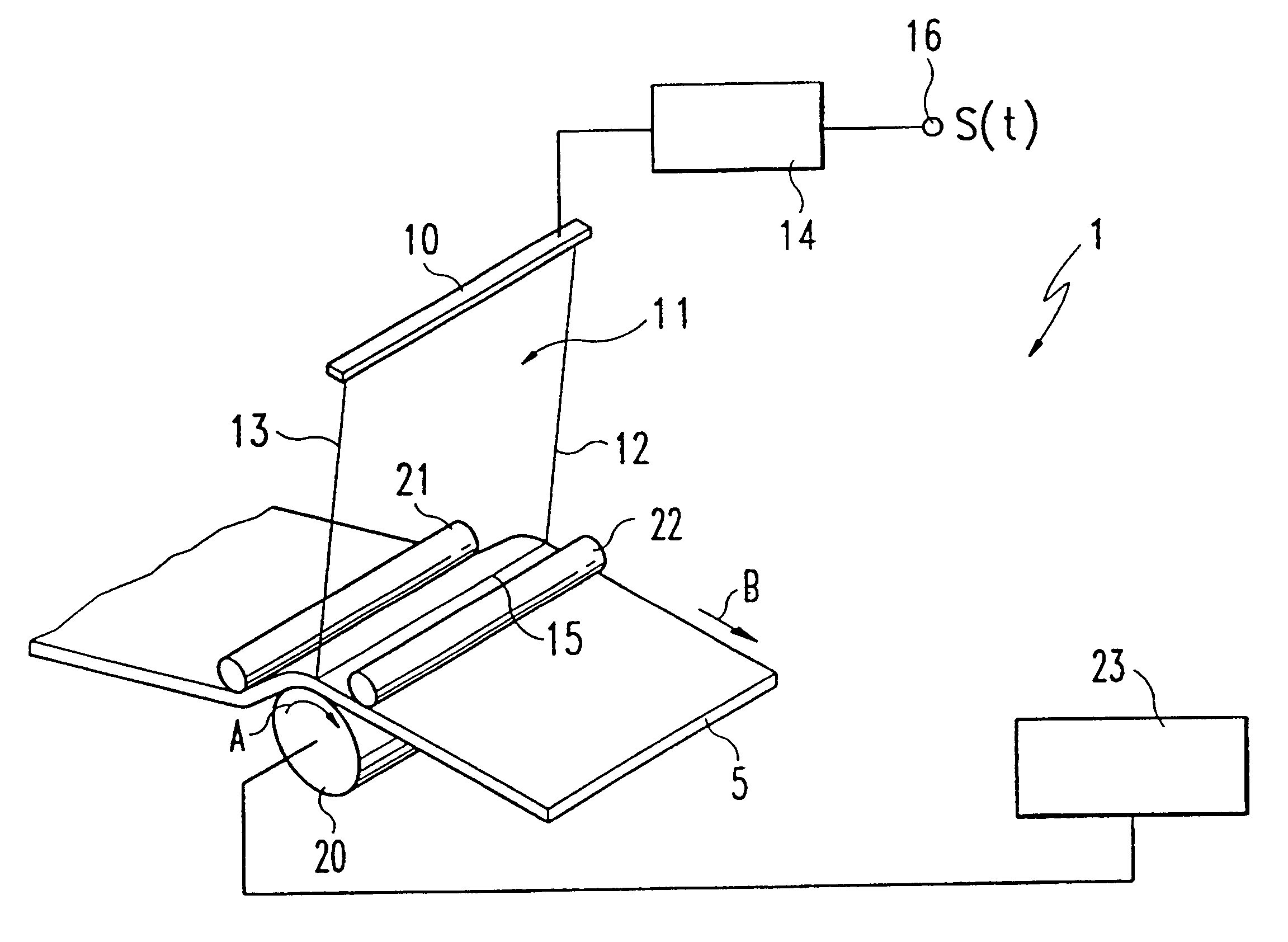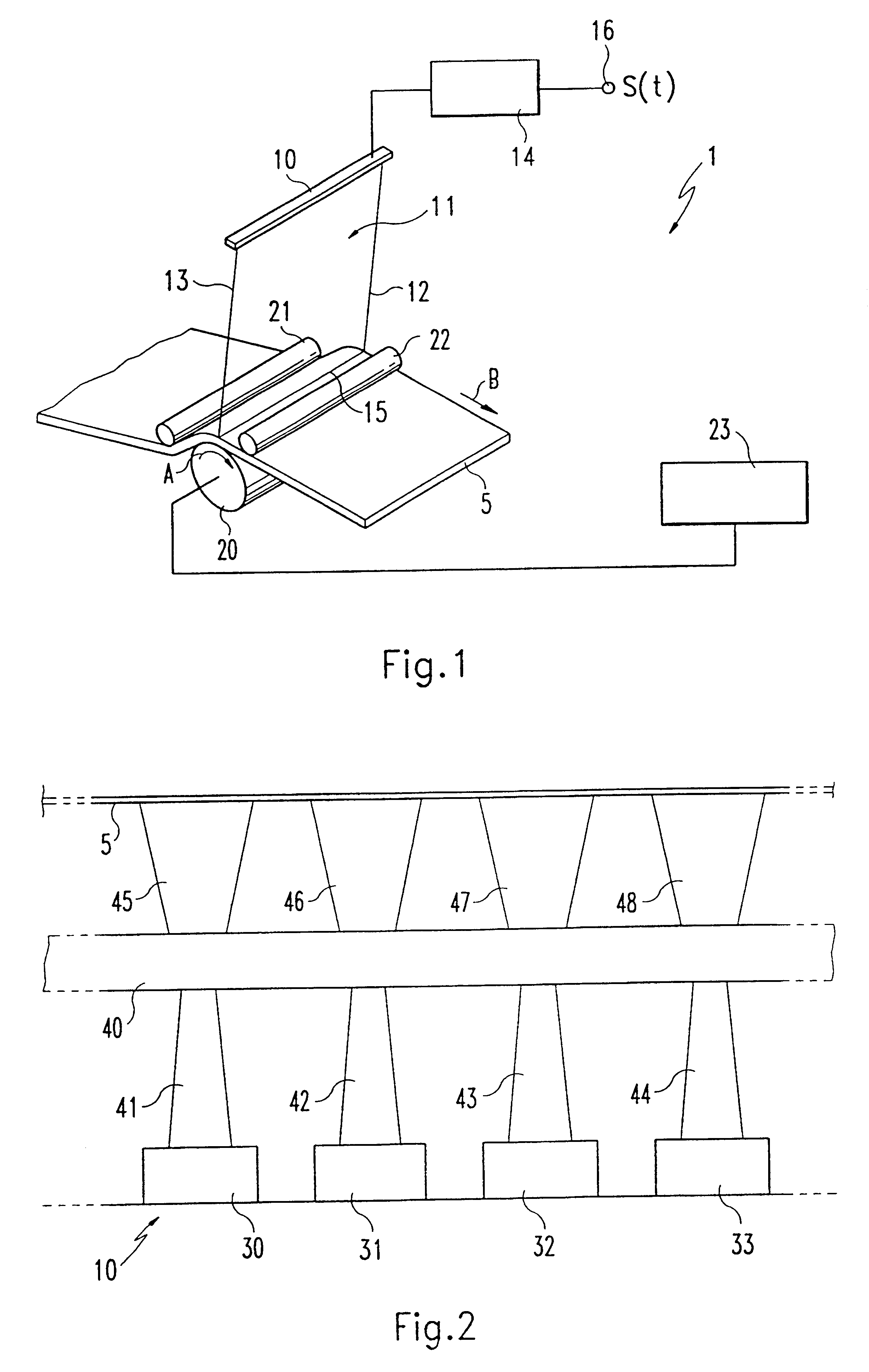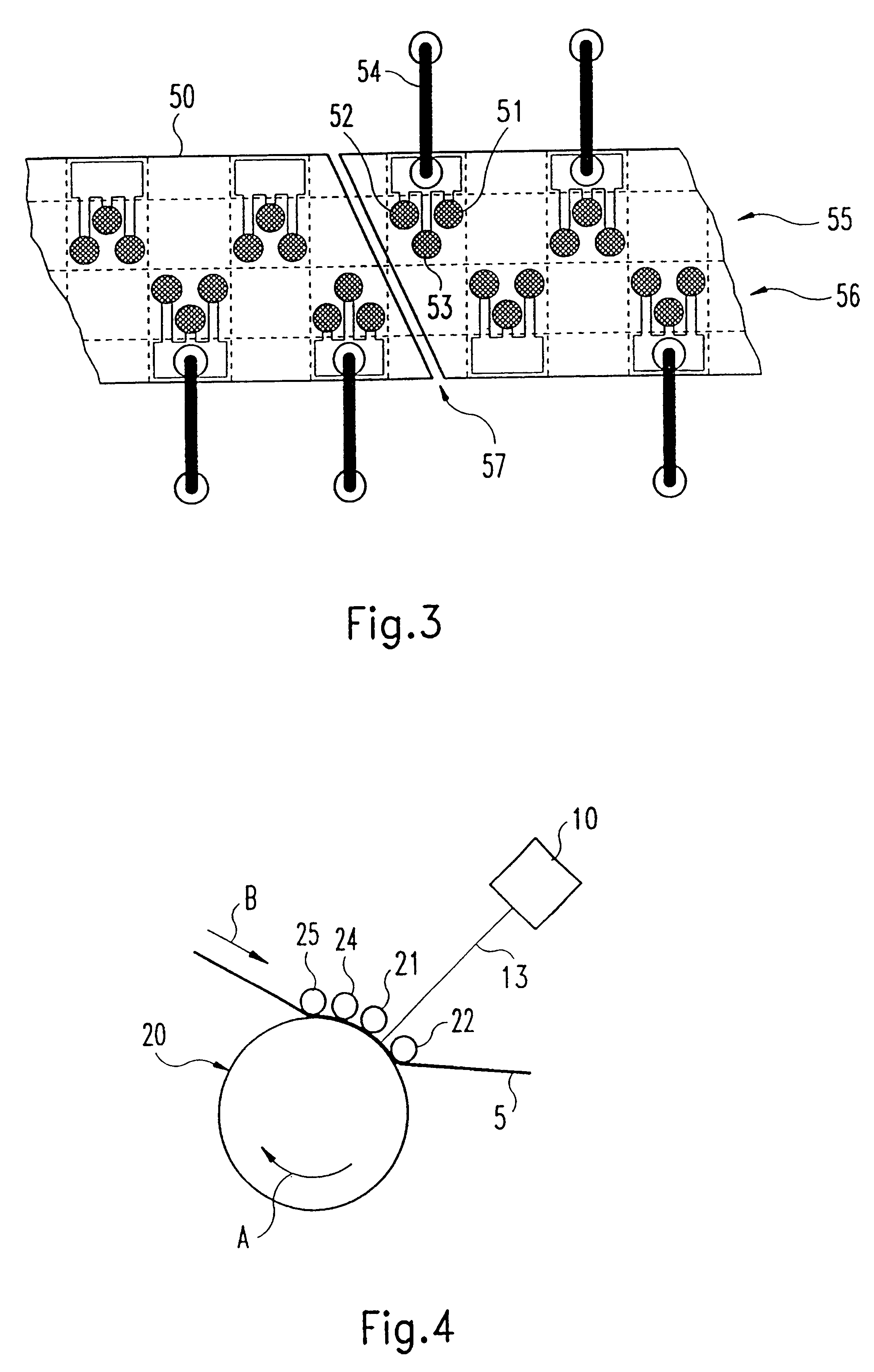Device for writing on thermographic material
- Summary
- Abstract
- Description
- Claims
- Application Information
AI Technical Summary
Benefits of technology
Problems solved by technology
Method used
Image
Examples
first embodiment
FIG. 1 shows the writing device 1 according to the invention for writing on thermographic material 5. The writing device 1 includes a laser row 10 which represents a writing instrument for writing on the thermographic material 5 using a specified information signal s(t). The information signal s(t) is applied to an input interface 16 of a laser row controller 14 and includes information about an image to be recorded on the thermographic material 5. The information signal s(t) applied to the input interface 16 can originate, for example, from a recording device for medical applications. The information signal s(t) used to address the laser row 10 is processed in the laser row controller 14. The laser row includes a plurality of individually addressable lasers which are directed towards the thermographic material 5. The laser row 10 can be used to write on a row 15 of the thermographic material 5 by blackening the thermographic material 5. The laser row 10 is spaced apart from the the...
second embodiment
FIG. 2 shows the device according to the invention depicting the beam path of the point sources in operation. In this example, the point sources are also lasers. FIG. 2 shows a section of the laser row 10 with four lasers 30-33 arranged side-by-side. The lasers 30 to 33 are shown in operation, when emitting a respective laser beam 41-44. The laser beams 41-44 in the present exemplary embodiment are directed perpendicular to the thermographic film 5 to be written. A lens 40 is disposed between the lasers 30-33 and the film 5. This lens 40 is a commercially available so-called SELFOC lens. The optical lens 40 is used to affect the radiation energies of the beam path 41-44 of the lasers 30 to 33 and to ensure that the laser beams of lasers 30-33 strike the thermographic film 5 exactly at the associated pixels. The beam path 41-44 of the lasers 30-33 is therefore converted by the optical lens 40 into the beam path 45-48 located between the lens 40 and the film 5. The lens should be able...
third embodiment
FIG. 4 shows the device according to the invention having several pressure rollers which press the thermographic film 5 against the heating drum 20. According to FIG. 4, a third pressure roller 24 and a fourth pressure roller 25 are placed before the first pressure roller 21. Pre-heating the film 5 with several pressure rollers 21, 24 and 25 increases the length of the contact path between the thermographic film 5 and a surface of the heating drum 20 and consequently also the time during which the heating drum 20 pre-heats the thermographic film 5. In this way, the pre-heating conditions for thermographic material 5 can be tailored to different thermographic material. The duration of the pre-heating step can be extended or shortened depending on the composition and the characteristic properties of the different thermographic materials. In addition, the thermographic material 5 can be pre-heated more accurately to a temperature below the writing temperature.
PUM
 Login to View More
Login to View More Abstract
Description
Claims
Application Information
 Login to View More
Login to View More - R&D
- Intellectual Property
- Life Sciences
- Materials
- Tech Scout
- Unparalleled Data Quality
- Higher Quality Content
- 60% Fewer Hallucinations
Browse by: Latest US Patents, China's latest patents, Technical Efficacy Thesaurus, Application Domain, Technology Topic, Popular Technical Reports.
© 2025 PatSnap. All rights reserved.Legal|Privacy policy|Modern Slavery Act Transparency Statement|Sitemap|About US| Contact US: help@patsnap.com



